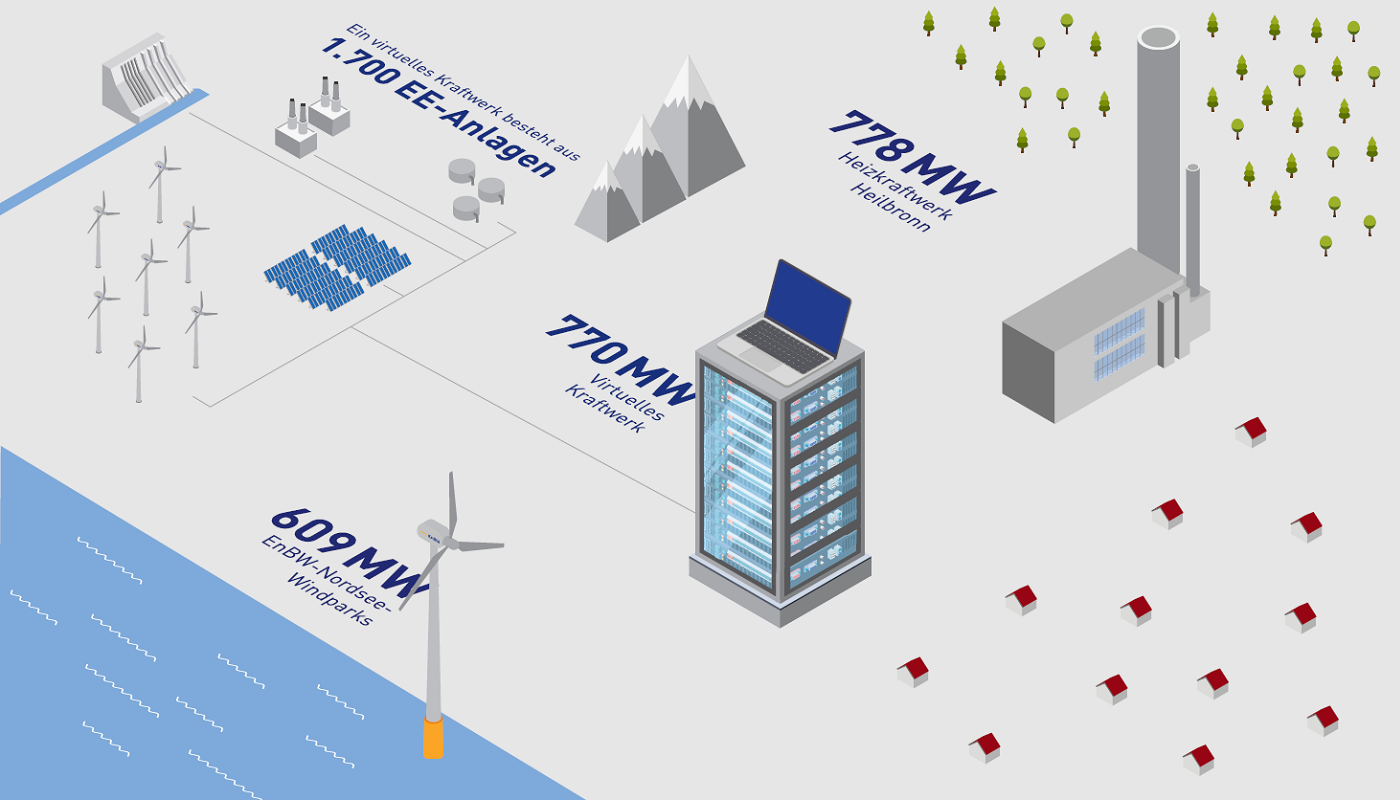Timing is crucial
How can companies use wind and sun even more effectively and reduce their energy costs in the process? For example, by using the smart electricity tariff from German energy provider EnBW and at the same time optimizing the energy consumption of their buildings with MeteoViva Climate.
Power plant of the future will consists of many small units generating electricity - such as photovoltaic plants, combined heat and power plants, wind turbines or hydropower plants. Organised correctly they form a virtual power plant that can be viewed as a swarm of decentralised electricity generators. The energy supply company EnBW has also developed such a virtual power plant. Here, it bundles the decentrally generated energies and markets them.
Benefit from low electricity prices as a large consumer
However, prices fluctuate considerably on the electricity exchange. The more wind or solar power is generated, the lower the exchange price. Together with EnBW, MeteoViva has developed a demand side management system that enables large consumers to shift part of their energy consumption to times when a lot of renewable and thus cheaper electricity is fed into the grid.
Everyone is talking about the opportunities presented by digitalization and the energy transition. We take advantage of them with MeteoViva Climate and EnBW's virtual power plant.Michael Schmidt, EnBW virtual power plant
Shift load and consumption to favorable times
In a pilot project, an EnBW office building in Tuttlingen, the electricity meters for the installed heating devices were switched to EnBW's smart electricity tariff. With knowledge of the electricity price forecasts from EnBW's virtual power plant, MeteoViva Climate exploited degrees of freedom in thermodynamics to shift, smooth or reduce load and consumption. As a result, peak load was reduced by twenty percent and energy costs by 34 percent - all without sacrificing comfort.
The new demand side management system enables our customers to use attractive, smart electricity tariffs and thus make even more consistent use of renewable energies.Dr. Jan Scheffler, MeteoViva
